You have a completed wood project sitting in the garage, just waiting on a final topcoat. Maybe you have wood floors in your home that desperately need to be refinished. That outdoor furniture that you bought years ago could use a fresh sanding and a new topcoat. No matter what your unique situation is, many people find that they need to know what type of finish should go on their latest wood project. They take a quick trip to the home improvement store and leave wondering whether they should use lacquer vs. polyurethane.
What is the difference between these two major types of finish? The distinction between the two might be more than you imagine. If you are ready to tackle that brand new project and just need a great starting point, here is a crash course on everything you need to know.
What is the Difference Between Lacquer and Polyurethane Finish?
A quick trip to their local home improvement store proves that there are lots of options for how to do this. You can choose from polyurethane, lacquer, shellac, or even varnish. Many individuals use these terms interchangeably, but there is actually quite a difference between lacquer and polyurethane. Understanding the differences between lacquer vs. polyurethane durability can help you to make a wise choice when it comes to finishing your latest project.
Lacquer
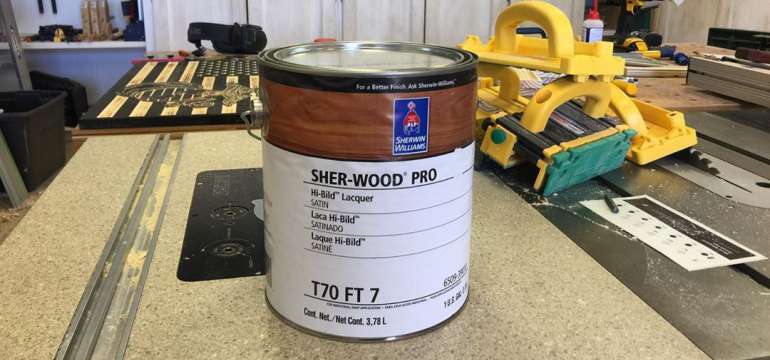
First, let’s take a look at what lacquer actually is and how it is applied to your wood surfaces. It is a preferred option for furniture because it sprays on smooth and even.
If you want to put multiple coats or you simply want to move the furniture as quickly as possible, lacquer is an excellent option because it dries quickly. It is a thinner finish, but that does not affect its durability. Expect to see a glossy finish that penetrates the wood surface, making it highly durable.
One of the reasons that some people hesitate to use lacquer is because it must be applied via a sprayer. They lack the necessary tools to complete the job properly and do not want to make the one-time investment into a high-volume, low-pressure sprayer. Keep in mind that you will also need a well-ventilated workspace if you plan to use lacquer.
 The finish itself is typically highly glossy, whereas polyurethanes can come in a variety of gloss levels. This makes lacquer ideal for modern pieces of furniture. However, it can change color over time and will eventually scratch with continued wear and tear. This is not the end of the world, though. Because lacquer is typically applied in thin coats, you can often touch up the finish without having to sand and reapply an entirely new coat.
The finish itself is typically highly glossy, whereas polyurethanes can come in a variety of gloss levels. This makes lacquer ideal for modern pieces of furniture. However, it can change color over time and will eventually scratch with continued wear and tear. This is not the end of the world, though. Because lacquer is typically applied in thin coats, you can often touch up the finish without having to sand and reapply an entirely new coat.
There are three different types of lacquer that you might want to consider. The first is an acrylic lacquer. This specific type is known for its resistance to color change that you can sometimes find with other types of wood finishes, including oil-based polyurethane. Instead of creating an amber color on the wood, it remains clear. It is not brittle and is more flexible, making it resistant to both wear and scratches.
Similar to polyurethane, you could also opt for a water-based lacquer. This option is less toxic and is virtually odorless, making it a great option for individuals who don’t have a large and well-ventilated workspace. Water-based lacquers offer extra durability compared to oil-based finishes.
Last but not least, there are nitrocellulose lacquers. This type of finish was originally used to finish cars but has since been adapted for use on furniture and other projects. It has an evaporative property that is unique among the other types of lacquers. Unlike acrylic lacquer, nitrocellulose does enhance the color of your wood, allowing it to be used on both light and dark pieces. It provides a highly durable surface that makes it super resistant to wear and tear. However, you must be careful to apply this in a well-ventilated area. Keep in mind that it is highly flammable.
Polyurethane
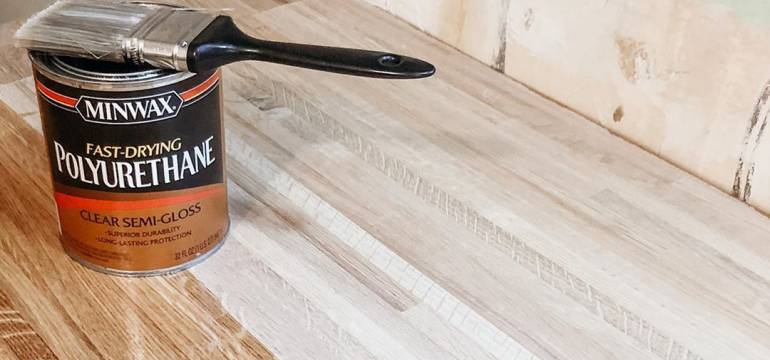
If you want something that is going to be durable and provide you with more style options, polyurethane is probably the way to go. This finish is essentially just a form of liquefied plastic until it dries on your furniture, floor, or other high wear areas like tabletops, banisters, and cabinets. It comes in both oil-based options and water-based options so you can decide what will work best for you.
Many people prefer the water-based polyurethane option because it has very little odor and low toxicity. It dries quickly so that you can apply many coats if necessary. Keep in mind that it does not typically hold up well to extreme temperatures or chemicals. It is best for indoor furniture items like bookcases, desks, or side tables. Water-based polyurethane is able to be used for finishing hardwood floors. It can be applied using a bristle brush, foam roller, or a rag.
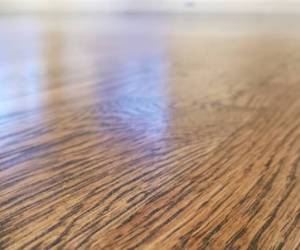
Finished with Bona oil-based polyurethane.
The color of the wood also typically remains the same with water-based polyurethane, whereas oil-based polyurethane can sometimes add a bit of color to the project. Most often, oil-based polyurethane adds a golden color to the finished product.
Oil-based polyurethane is a bit different than its water-based counterpart. First, it should be noted that oil-based polyurethane does have more fumes, so you will want to consider using a respirator in a well-ventilated area. It requires more time to dry and cure, so make sure to read the manufacturer’s directions carefully. Applying it is simple with either a natural-bristle brush or a rag.
Both types of polyurethane can be applied over the top of latex or acrylic paint. Keep in mind that oil-based options might change the color to be a bit more yellow or amber, particularly if you are working with a light paint color. Both options are also available in spray cans that can make application as easy as possible.
Cost Differences
One of the biggest things that helps people to decide between lacquer vs. polyurethane is the cost difference. The price on each product really depends on the quality, name brand, and quantity that you purchase. You can find lacquer and polyurethane that are comparable in price, but which one is really the better bargain?
Experts say that polyurethane is the better deal, especially for beginners who may not have had much practice with finishing wood surfaces. Both products are comparable in price, but polyurethane is a thicker coat. Initially, this might make it a bit more difficult to apply for someone who has little practice, but it doesn’t take long to get the hang of it.
The thickness of the polyurethane also means that it takes fewer coats to get adequate coverage and to protect the wood beneath. On the other hand, lacquer requires more coats because it is a thinner substance. This is an additional cost because you will have to supply more materials to get the job done right.
 When applying lacquer, you must use a sprayer. This means that you must either rent or purchase a sprayer, which adds an unexpected cost to a relatively inexpensive can of lacquer finish. These machines can cost upwards of $100, so be prepared to make an investment in the tools necessary to apply this type of finish. Unless you plan to do quite a few projects with this type of finish, it is likely too costly to consider applying lacquer instead of polyurethane.
When applying lacquer, you must use a sprayer. This means that you must either rent or purchase a sprayer, which adds an unexpected cost to a relatively inexpensive can of lacquer finish. These machines can cost upwards of $100, so be prepared to make an investment in the tools necessary to apply this type of finish. Unless you plan to do quite a few projects with this type of finish, it is likely too costly to consider applying lacquer instead of polyurethane.
Lacquer vs. Polyurethane for Exterior Wood Surfaces
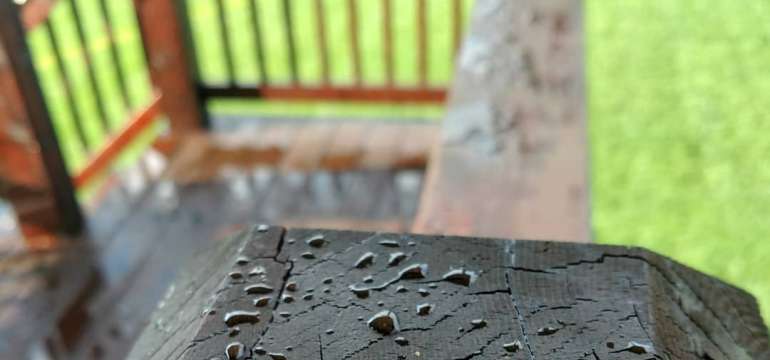
Depending on your latest project, you might be wondering which finish you should use for your exterior wood surfaces. This is an excellent question as one is definitely better suited to the fluctuations of temperature that are typically seen in outdoor areas. If you want to make outdoor furniture or decks last for the long haul, you should be particularly cautious about how you are finishing them.
The reality is that polyurethane does not hold up well when it comes to fluctuating temperatures. It is highly susceptible to peeling and cracking when left in the great outdoors with fluctuating temperatures and exposure to the elements. However, this is not the only reason why lacquer is a clear choice.
You might already know this, but wood is a hygroscopic material. This means that it absorbs water, something that is particularly important if you are talking about outdoor furniture, boats, or decks. Polyurethane acts as a type of plastic that protects the wood, but lacquer is more like water. It is absorbed into the surface of the wood, forming a stronger bond that is more difficult to disrupt.
Unfortunately, lacquer is also known to peel and discolor over time. This means that you might be facing frequent maintenance, but it should be relatively easy to touch up. Unlike polyurethane, where you must sand the surface in order to apply a new coat, lacquer is generally thin enough that a new coat can be sprayed over the surface without the need for this.
If you are going to be coating exterior wood surfaces that won’t be exposed to extreme heat fluctuations, then polyurethane might be the better option. This would be ideal if you were going to use your outdoor furniture in a sunroom that was climate-controlled. It could also be okay if you live in an area that is not susceptible to major heat changes from summer to winter.
High Wear Areas and Finishes
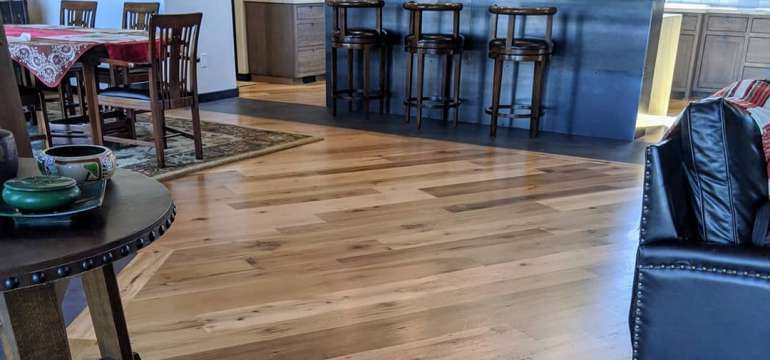
Now that you know what type of finish to use on your exterior projects, it is time to turn your attention to the high wear areas of your everyday home. What type of finish should you look at using on items like your flooring, tabletops, banisters, or cabinets? There is a clear winner between lacquer and polyurethane for these indoor projects.
Polyurethane is plastic in liquid form. When it dries on a surface, it is extremely durable. It does not particularly matter whether you use oil-based or water-based. However, you may find that water-based polyurethane is the more durable option between the two products. However, it can easily crack and peel when the wood is exposed to extreme temperature and moisture levels. This is because the wood constantly moves when exposed to water or humidity, and it can damage the finish of the project.
Exterior projects are better to use with lacquer because it is absorbed into the wood and is less susceptible to this type of damage. Because many of the high wear areas are located inside your home, you may want to consider the more durable polyurethane finish.
Floors and Banisters
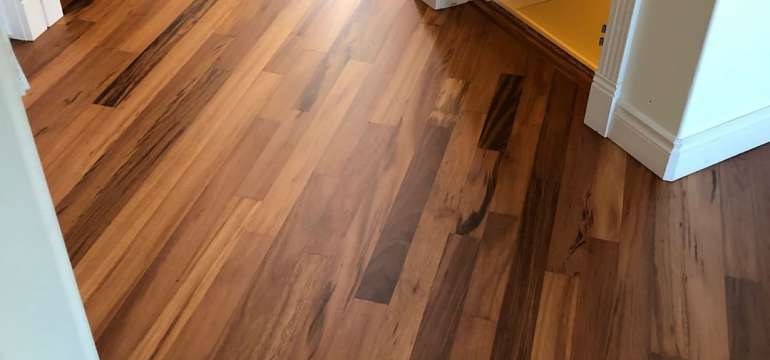
One of the major reasons that homeowners like to choose polyurethane for their floors or banisters is because it comes in a variety of gloss levels. Lacquer is always a high-gloss option that shimmers and shines, but you can get a more matte finish with a polyurethane. A lower gloss level will show fewer scratches and less wear and tear over time. This makes it ideal for flooring, particularly if you have big dogs or small children who will be particularly hard on your floors.
Your banisters may not see the same kind of wear and tear as your floors, but they do still get a lot of traffic every day. Consider applying the same type of finish to your banisters as you do to the floor. This helps to give your home a sense of continuity so that the floors, stairs, and banister all match one another. Choose the same gloss level and type of polyurethane for wood staircases and wood banisters or spindles as well.
Cabinets
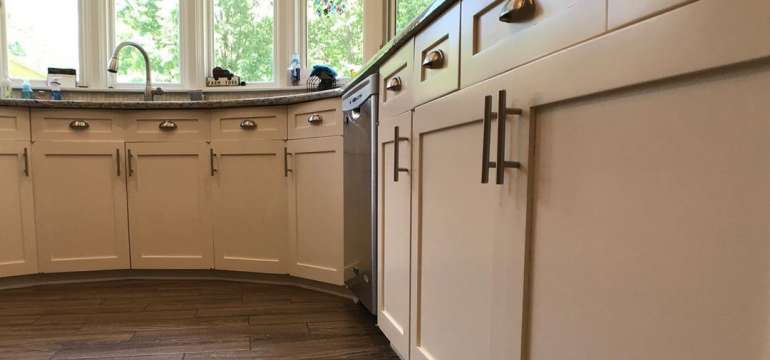
The same is true for your kitchen cabinets. They see a lot of wear and tear from fingerprints and opening and closing on a regular basis. Because they are located inside where there should not be many temperature fluctuations, you should consider using polyurethane on a low to mid-level gloss. This will help it to show fewer fingerprints than the glossy surfaces of lacquer-finished projects.
Modern design schemes often include painted kitchen cabinets instead of stained wooden ones. If this describes your home, you may not need polyurethane or lacquer on your cabinets. It depends on what type of paint you applied. If you used a highly-durable type of paint, then you may not need to apply a top layer to seal it. Paints with a high sheen do not need to have polyurethane applied to them.
If you used a lower quality paint, then a quick coat of polyurethane can help you to finish it completely and protect them from future wear and tear. You should consider using water-based polyurethane if you have used water-based paint in a flat or eggshell sheen. Satin latex paint can also accept a coat of water-based polyurethane. If you attempt to use oil-based polyurethane over a water-based paint, you will have a difficult time getting the topcoat to take to the paint, and it could lead to flaking.
Tabletops
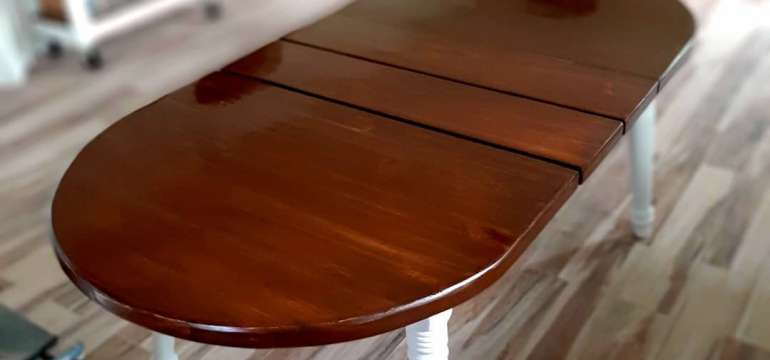
For tabletops, you may still want to consider a lacquer finish, though. Protection from water and heat is paramount when you consider your tabletop because you will always be setting drinks or hot dishes on the table.
You could use polyurethane but would need to take extra precautions to protect it from heat. While this can be a pain, it is a great way to make use of the durable finish that polyurethane provides without damaging the table. Polyurethane is much more protective against water damage. It forms a hard finish that is particularly resistant to damage that stems from water.
Choosing the Right Finish
When it comes to your next project, you should be well educated on what type of finish is best suited to your overall goals. Both lacquer and polyurethane are durable options, but they can play different roles in your finishing process. Make sure that you clearly understand the distinctions between these two major types of finish before you dive into your latest project.
- How to Cut Lexan - September 25, 2020
- Mineral Spirits vs. Mineral Oil - September 25, 2020
- Shellac vs. Polyurethane - September 24, 2020

Bill
Wednesday 19th of April 2023
Good article with lots of information, but what would be the choice for something that may get occasional moisture AND high summer temps?
Susan
Wednesday 1st of March 2023
Good, thorough article. Thanks! I have metal legs on the bottom of a vanity, the legs have a gold finish, and because my house can have some humidity due to its forest location, I want to prevent possible discoloration of the gold finish. I wanted to spray a top coat of lacquer or polyurethane over the legs before installation. What is the best top coat for metal?